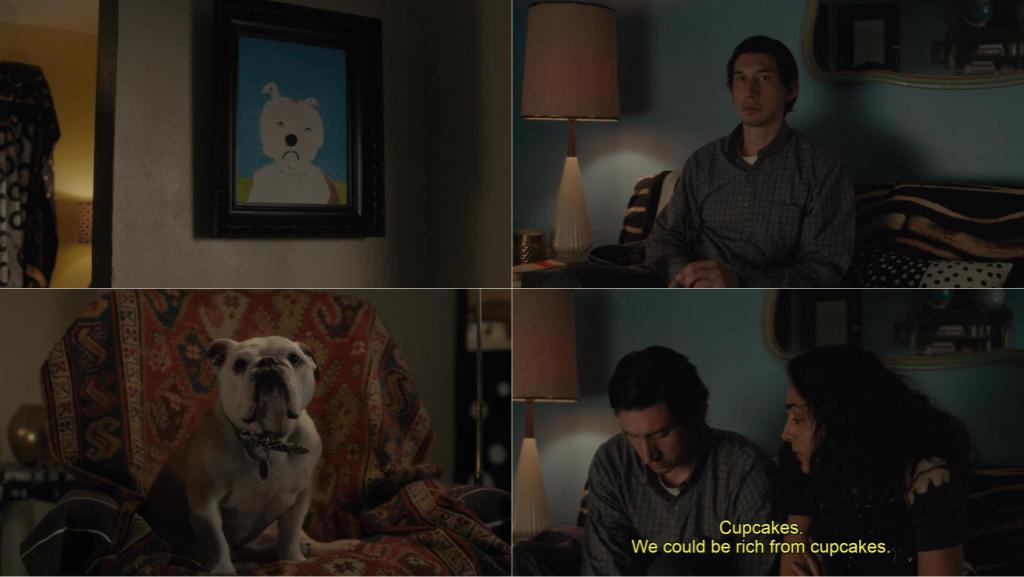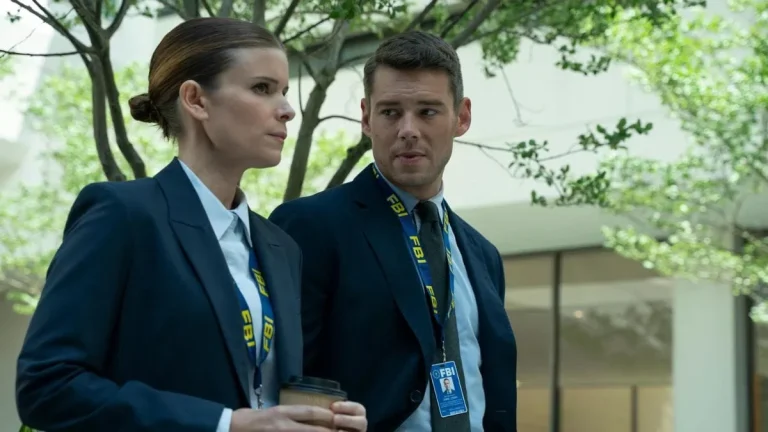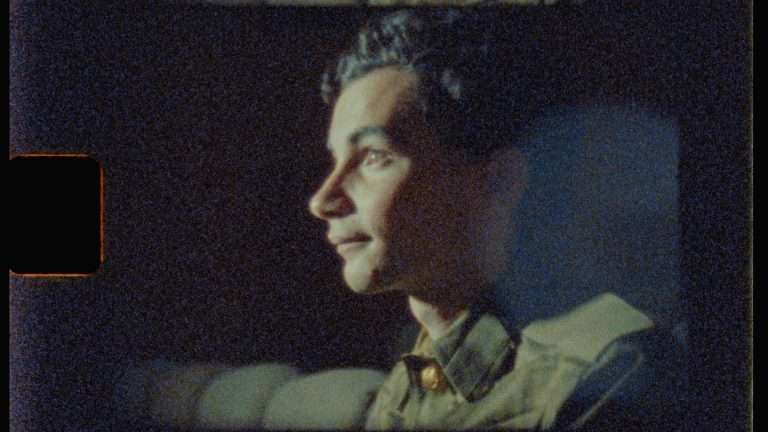Jim Jarmusch’s Paterson is a challenging film to watch. With little happening in terms of macro-level plot points and major build-ups, it transforms commonplace existence into the extraordinary by reinforcing the profundity of ordinary life. Initially, the movie appears to just tell the story of a bus driver from a small city in America who is deeply engaged in writing, which defines him as an individual. So, what is it that makes a story-teller want to start a discussion around a simple man who has a mundane job and no ambition whatsoever?
The poetic sensibility of the protagonist sets him apart from the crowd and makes him an interesting subject. An audience’s capacity to appreciate the movie, however, does not end here, and heavily depends on the way we are trusted by the director to watch it. Paterson is essentially a tale about a narrative vision in which the character’s story is not the primary one being told. He is a metaphor and surrogate for the director’s engagement with the visual art of story-telling.
We arrive at a story with the expectation of being taken on a ride through changing situations. Conventions must admit responsibility for generating such expectations. This is why, disregarding the lack of any such promises made by the narrative, I began to anticipate some kind of derailment in the course of the story. I will also try to justify my expectations later in this essay by showing that there are intimations of impending disaster within the narrative itself.
I was expecting Paterson to eventually express frustration with his routine, or dissatisfaction with his artistic process, or trouble with his eccentric but equally artistic partner (Golshifteh Farahani), or at least a climactic show-down when his notebook is ripped apart. Despite being no foreigner to Jarmusch films and the repeated assertions by Paterson (Adam Driver) himself that he is ‘okay’, I was expecting all of these. If anything, I put the blame on the insinuating ‘Divorce for 299$’ banner stuck on the bus that he drives around.
I oscillate between the arguments that the narrative provoked me to expect drama and that I am responsible for the tendency to thrust my expectations upon a story, which makes me suspect even innocuous details. Needless to say, the issue of the desire for drama and denouement has a compelling impact on story-telling, especially on its form and structure. It is a factor that most filmmakers grapple with, and Jarmusch must have had his share of deliberation (consider the scene with the Japanese poet). The theme of this film is heavily indebted to this consideration, which critically defines it.
Related to Paterson (2016): Coffee and Cigarettes [2003] – Discerning the Sublime among the Quotidian Banality
Again, we have the template of the ‘slice-of-life’ narratives, which believe in portraying life just as is. Jarmusch has repeatedly said that he wanted to make ‘a love story’ that is an ‘anti-dote to drama, action, entertainment’. He has defined Paterson as the story ‘of a poet who is a working-class bus driver’ and ‘chooses to live the way he wants’—a story that is ‘observational’ and consciously ‘anti-significant’. In the movie, listening is the primary action, and the observation of the minute details of everyday life replaces dramatic tension. This explanation is adequate if we are satisfied with an understanding of realism.
But what if the protagonist of a story is not a character, but its own perspective? Does it still require apocalyptic moments to make a statement? Or do close-up shots of a partially filled beer mug and shoes of random bus passengers suffice? I am inclined to believe that Paterson, the person, is not the object of observation, but the lens through which the process of observing has been represented. This explains why and how such close-up shots complement and enrich the nature of the narrative. As the movie is about the way we look at the world around us, attention is directed towards every breath that a shot, sequence or scene breathes. Detached from energetic movements, Paterson is a metaphor that emulates the vision of its creator.
Jim Jarmusch prepares us for this difficulty through guile. The deception nurtured through the narrative makes us want to believe that the film talks about transience and recognition, and wills us to ponder over what makes life extraordinary. This is what I meant when I said that this narrative is replete with insinuations. The story meticulously inspects two strains of Paterson’s life—his artistry, which thrives in spite of or, rather, because of his professional choices, and his relationship with his partner, Laura.
Paterson has arranged his life in a sedate, staccato routine that nevertheless accommodates his passion for poetry. He is completely without any ambition when it comes to his art. Disregarding minor hiccups, he leads a comfortable existence, which, ironically, becomes a bone of contention in the course of the narrative. After all, what is a story without conflict? The narrative led me to suspect that Paterson feels stagnated due to the lack of better opportunities and, probably, his relationship with Laura is irrevocably sliding towards rupture. Much to our disappointment, nothing comes to pass as we follow the two strains to the end. The only crisis for Paterson is incidental and almost completely devoid of any narrative accumulation. However, these are not cul-de-sacs in terms of linear progression, but the very elements that represent the directorial vision.
The tact used by Jarmusch feeds on the desire for conflict. Laura repeatedly suggests that Paterson should share his poems with a wider audience, which is the first challenge to the way he functions. This is compounded by Laura’s owning of the space inside their home, which may be misconstrued as overwhelming for Paterson. This occasionally suggests that Paterson is on the brink of being smothered by her creativity. These must be ill-omens of emerging conflict (or so I thought)! Little did I realize that this anxiety has been deliberately and meticulously planted and sustained by Jarmusch. It is unnerving that beneath or, rather, in spite of the passivity of actions, the movie can hold so much tension within itself.
Similar to Paterson (2016) – Stranger Than Paradise [1984] – A Charmingly Low-Key Classic of American Indie Cinema
It does not help that we are not given a morsel of additional information about the characters’ pasts or future (except that one photograph of Paterson in service uniform), and we must draw conclusions about the couple from a glimpse at one week of their lives. Only when we reach the end of the movie do we discover that this tension is a ploy. The source of the anxiety is the audience and not the characters, who are more perfectly in tune with each other than we can imagine.
A shot-by-shot analysis can be tiring, but I feel compelled to write this. In the segment titled ‘Monday’, when Paterson returns from work, Laura is seen decorating the house with curtains in an overload of black and white motifs, which has lately been her ‘thing’. They dream about becoming rich if her cupcake business takes off. Though there is nothing frivolous about wanting to have a successful cupcake business, Paterson’s lukewarm response to her enthusiasm makes us feel that her initiative perhaps should not be taken seriously. His mild appreciation of the new curtains probably implies that he is cringing inside and thinking, ‘no more of these’! The shots of Marvin and his cartoonish portraits add a comic tone to the scene, which complicates it further. Laura’s insistence that Paterson should share his poems with the world is set in this jumble. Important pieces of information are conveyed in this scene in the form of responses and interactions that are either noncommittal or misleading. The conclusions arrived at by the end of the segment do not add up. The perplexity increases as the week progresses, and everything ultimately comes together only in retrospect.

In Down by Law (1986), Jarmusch is not as interested in the adventures of prison-break as he is in the interactions between the three prisoners. The story does not make us grab onto the edge of our seats and think ‘what next, what next?’ Instead, it makes us observe the oddities of the exchanges between three individuals. Paterson is similar in the sense that it deviates from genre expectations and concretizes the exploration of an artist’s vision. This artist, however, is both Paterson and Jarmusch at the same time, and the narrative speaks for itself. It doesn’t matter how the scroll unfurls but, rather, what it consists of.
The movie is a chiaroscuro of patterns, coincidences, inside jokes and references, and the cityscape forms a network of meanings, only if you know how to ‘look’ for it. The city is also connected with the legacy of William Carlos Williams, and Paterson keeps alive the memory of his artistic achievements. His encounter with a young poet, waiting for her mother with her secret poetry notebook in her hands, is a remarkable moment of the happy collision of creative universes. It metaphorically replicates the ongoing conversation between two other artists—William Carlos Williams and Jarmusch. Finally, the contrast between the bus conductor of Indian-origin (Rizwan Manji) and the African-American rapper (Method Man) shows how rich it is to live with the quality of creative expression.
Point-of-view shots from the perspective of Paterson light up the body of the work. Often quite cryptic, they let you under the skin of the city, into the hearts of the characters and inside the mind of the protagonist himself. I became Paterson’s accomplice and, on his behalf, began to observe the passengers on the bus because he could only overhear their conversations. Also, the poems of Ron Padgett are the beating heart of the movie. Their appearance on the screen adds a mystical dimension to the film and challenges its formal realism.
Though the story follows an individual at his chores, the setting is, by itself, a looming presence. Paterson is tricky in this respect as the sleight of hand (or rather, vision) is so subtle that it is easy to miss. Let’s not forget that the city and the protagonist have the same names and, therefore, the title can be as transitive as the breadth of our imagination. The bus driver is, thus, an allegory of the ability to choose the way we perceive and organize.
Every frame of this apparently minimalistic movie is teeming with details that make us want to revisit it and keep discovering this little element and, then, another. It is like sifting through the sand on a beach for the broken remnants of dead aquatics.
Also, Read – Dead Man [1995]: The Poetry Of The Sinners.
Paterson will never want to publicize his poems. He will fix the tilted mailbox every time Marvin, the most endearing of all antagonists, meddles with it. He will come alive when he overhears interesting conversations. His process is important to him, and this commitment matters the most. The loss of his poems, though a painful setback, ultimately means little for the solitary poet who has created an authentic world for himself. He is immersed in his artistic freedom, which is both inviolable and fulfilling. Paterson and Jarmusch are similar in so many ways.
You cannot watch Paterson the way you would a conventional drama. If you do, you may miss out Golshifteh Farahani’s t-shirt with the Arabic-script motif, which reflects the spirit of Jarmusch’s cinema.






![Nocturnal Animals [2016]: Reality meets Fiction](https://79468c92.delivery.rocketcdn.me/wp-content/uploads/2017/02/nocturnalanimals1-768x511.jpg)
